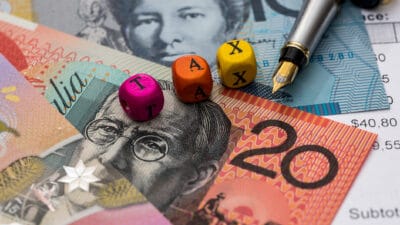Becoming a (self-made) millionaire is one of those things that most people should aspire to be. Being a millionaire should mean financial independence in most places in the world, giving you more freedom and allowing you to be more generous & philanthropic with your money.
So how do you get there? Well, I think there are two main ways to reach a $1 million ASX share portfolio:
Utilise long-term compound interest with diversified portfolios
As Albert Einstein once said, compound interest is the eighth wonder of the world, it's the strongest financial force there is – for both building or destroying wealth.
Shares have been performing strongly for investors for a very long time. When you look at the long-term data shares have returned an average of 10% per annum when you re-invest the dividends. There are exchange-traded fund (ETF) portfolio investments that you can invest in that would get you the average share market return for a very low management fee like iShares S&P 500 ETF (ASX: IVV), Vanguard MSCI Index International Shares ETF (ASX: VGS) and BetaShares Australia 200 ETF (ASX: A200).
Average returns of 10% a year doubles your money in less than eight years, which is excellent.
There are some investing businesses which try to (and do) outperform their index benchmark with their own hand-picked shares. Three of my favourites are Magellan Global Trust (ASX: MGG), Washington H. Soul Pattinson and Co. Ltd (ASX: SOL) and WAM Microcap Limited (ASX: WMI).
If your chosen investment returns 10% a year after fees for the long-term then you'll do very well.
To become a millionaire with shares returning 10% a year you would only need to invest $1,000 a month and in less than 24 years you'll get there according to Moneysmart's calculator. If you invest more than $1,000 a month you'll get there even quicker.
Find the best performing shares
Shares have returned an average of 10% a year, but that includes the poor shares. Imagine if you could mostly pick the great ASX shares, the ones that produce strong returns, the ones with growing profit margins, good management and (usually) expand overseas.
For example, over the past five years the share price of Altium Limited (ASX: ALU) is up 1,005%, the share price of Xero Limited (ASX: XRO) is up 424% and the share price of CSL Limited (ASX: CSL) is up 220%.
You're not going to pick every winner, but you could certainly end up finding plenty of shares that boost your portfolio returns to perhaps 12% a year or 15% a year.
Average returns of 12% per annum would turn investing $1,000 a month into $1 million in less than 22 years, saving about two years. Average returns of 15% per annum would turn investing $1,000 a month into $1 million in less than 19 years, saving another three years.
It would be very tricky to achieve 15% returns in this investment environment, but 12% returns are certainly possible.








